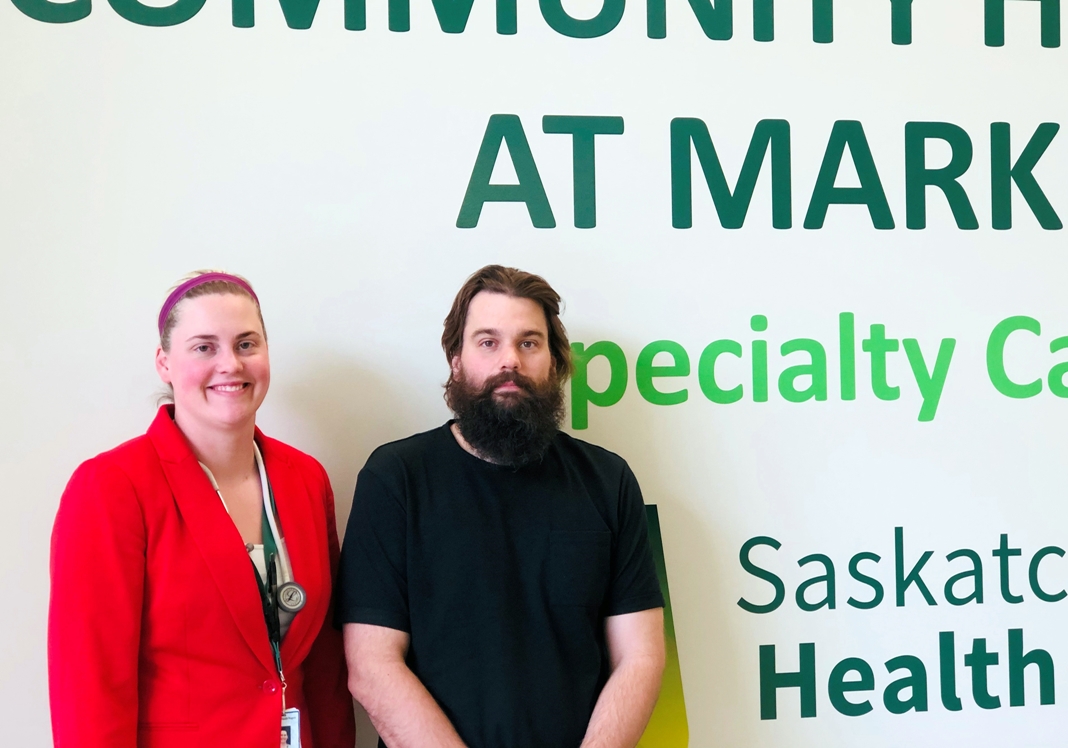
Nurse practitioners active in multidisciplinary health care team
Because of their nursing experience and advanced education, nurse practitioners play a vital role as collaborators on interdisciplinary health care teams.
“We’re good at the big picture stuff,” says Nurse Practitioner Erin Boyce (BSC’05, BSN’08, MN’14). She and her colleague, Nurse Practitioner Jeff Phaneuf (BSKI’07, BSN’09, MN’15), are graduates of the University of Saskatchewan’s College of Nursing, Primary Health Care Nurse Practitioner - Master's program.
Boyce says she felt really well prepared to go into practice once she was graduated.
“My clinical experiences through my clinical rotations were very influential. I had opportunities to work with nurse practitioners and physicians. That really helped me see a large volume of patients with many different health conditions.” Having worked in emergency departments, Boyce knows how to deal with acute situations, too.
The broad view of patient care that nurse practitioners bring to an interdisciplinary team allows them to make valuable contributions.
“We’ve been bedside nurses, we’ve done personal care, and anything else that has to do with patient care, including taking the family living situation into account,” Boyce says. They are accustomed to communicating with the diverse members of the health care team and discussing clients with physicians, pharmacists and other professionals.

Cross-functional teams collaborate
Phaneuf and Boyce work with interdisciplinary teams that vary with needs of each patient. They include: physiotherapists, occupational therapists, registered nurses, family physicians; and specialists like cardiologists, respirologists, special care aids, client patient access services, dieticians, pharmacists and speech language pathologists.
“Every morning we do our mini rounds where the team brings up concerns and we collaborate on the patients’ care, which is unique to each patient,” Phaneuf explains. “We will sometimes partner to do a home visit when we have similar goals; our approach is determined by how we can best support the patient.”
“What we bring to the table is our unique approach, viewing the patient holistically, and our diverse experience,” he says.
As nurse practitioners, Boyce and Phaneuf work in collaboration with a physician. They provide detailed notes on all of the patient care they provide and consult with the physician on any changes.
“I’ve had nothing but good experiences working with physicians,” Phaneuf says. “They are very accepting of the nurse practitioner role on the team.”
Nurse practitioners have large scope of responsibilities
In their work with the Seniors First program in a Saskatoon community health centre, Phaneuf and Boyce deliver home services to people who are discharged from hospital. They are typically older adults with complex medical conditions.
“We provide home care with the aim to prevent unnecessary emergency room visits,” Phaneuf says.
Adds Boyce “As nurse practitioners, we are able to provide in-home holistic care, which helps patients who may not be able to see their doctor often, or at all.” They can also perform functions that are beyond the scope of a RN.
Recently, Boyce had a patient who was to receive medications in his home for a week. Her team included paramedics and an RN. Boyce was able to do blood work, provide continual assessment, and administer antibiotics intravenously to the patient in their home.
It’s that kind of responsibility that drew Phaneuf to be a nurse practitioner.
“The nurse practitioner role allows for the larger scope of practice and we are able to act autonomously,” he says.
His advice to anyone considering the field: “Have the widest variety of experience you can.”
Boyce says only: “Go for it. Prepare to work hard and commit. And take opportunities when they arise.”
